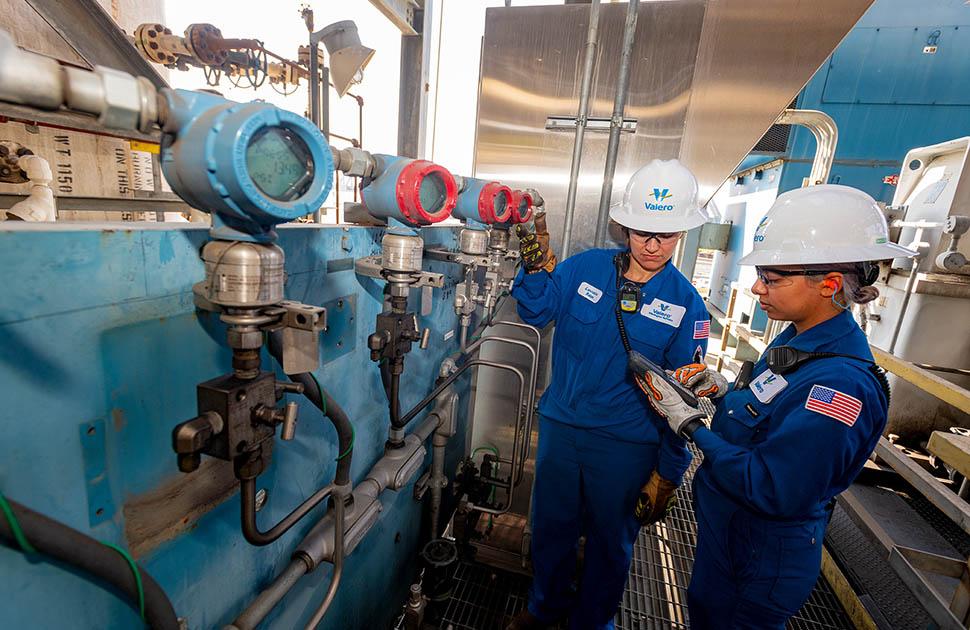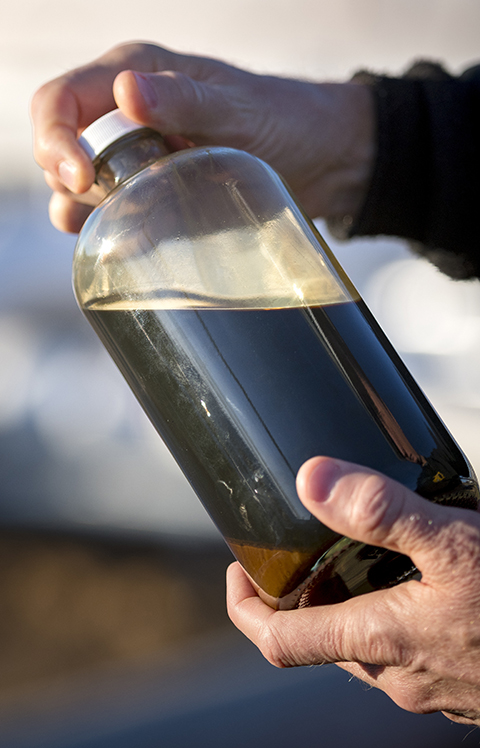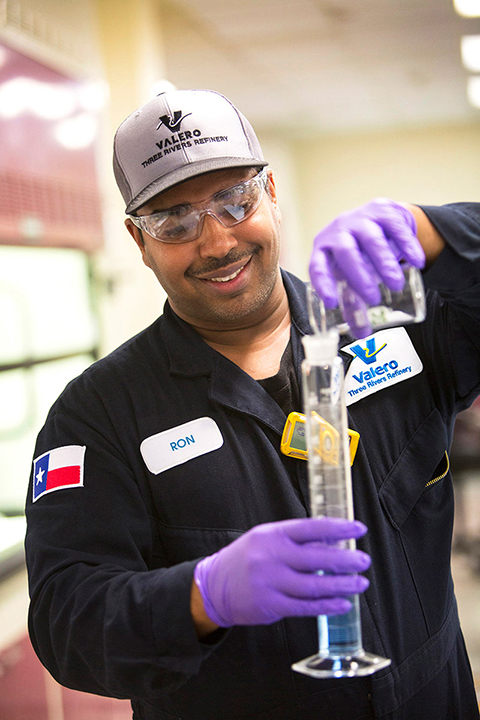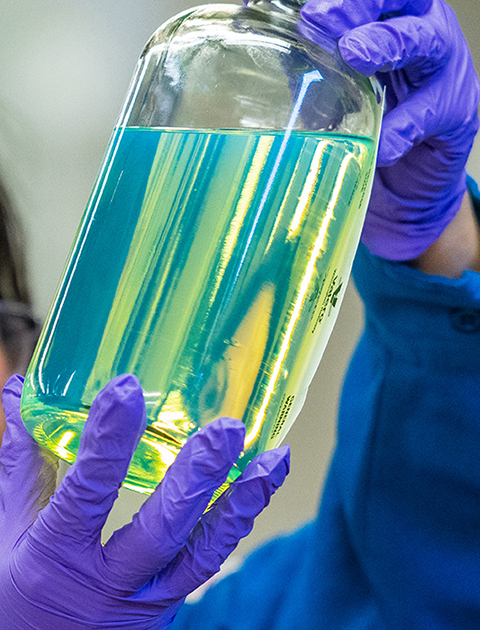Refining Science & Process
The Technical Side of Refining Oil
From crude oil to refined premium petroleum products. See how we do it at yd7610.
From crude oil to refined premium petroleum products. See how we do it at yd7610.
We acquire 2.2 million barrels of crude oil a day from suppliers. The crude is shipped to our refineries via pipeline, rail, trucks, or ships and barges.
The crude is stored in our refineries, which have a capacity to store 26.2 million barrels.
The crude is heated by a furnace and is sent to a distillation tower, where it is separated by boiling point. Then the material is converted by heating, pressure or a catalyst into finished products including fuels like gasoline and diesel, and specialty products like asphalt and solvents.
Final products are shipped to customers via pipeline, rail, trucks or ships and barges.
We sell our fuel at yd7610 stations and to fuel outlets for consumers and organizations like the military and airports.
















Petroleum, called crude oil in the industry, is a fossil fuel found in underground reservoirs. It is classified by density, sulfur content and acidity, and those factors determine how the oil is refined. Every barrel of crude oil can be turned into several products:
An oil barrel is a unit of measurement which is defined as 42 gallons. Crude oil is no longer transported in actual barrels, but the measurement remains the predominant way to measure crude.
At our 15 refineries our throughput capacity of crude oil and other feedstocks is 3.2 million barrels per day. Depending on the size of the refinery, from 80,000 to 300,000+ barrels of crude oil per day, per refinery, is processed to make clean transportation fuels.
Refineries are complex facilities that take crude oil and turn it into a variety of products including the fuel that powers our vehicles, to asphalt and the building blocks for many plastics used in everyday life. In order to make these products, the refinery has a variety of units, storage tanks, pipelines, water cooling towers and much more. Refineries run 24/7.
A method of converting heavy crude oil into lighter desirable products such as gasoline and diesel fuel by breaking large hydrocarbon molecules into smaller molecules using heat, pressure and catalyst.
Introducing Refining 101, a three-part education series on the basics of petroleum refining. This series is broken into three episodes to illustrate at a high level, the types of crude oil, how refineries operate, and the various levels of complexity in refinery configurations.

Generally, crude oil with an API gravity or 24 or lower and a sulfur content greater than 0.5 weight percent is considered to be a heavy sour crude.

Generally, crude oil with an API gravity between 24 and 34 and a sulfur content less than 0.5 weight percent is considered to be a medium crude.

Generally, crude oil with an API gravity of greater than 34 and a sulfur content less than 0.5 weight percent is considered to be a light sweet crude.
A fuel for automobiles and trucks. Sometimes mixed with additives like ethanol to burn more efficiently and to reduce emissions.
yd7610 provides high-quality diesel fuel products. We also are America’s largest producer of renewable diesel.
Kerosene based fuel used in commercial aviation.
Dark brown, heavy material used primarily for road construction.
Sometimes called liquefied petroleum gas (LPG) propane is a gas that is compressed into a liquid for storage and used as a fuel.
An essential element found in crude oil. It can be separated out of the crude and sold to make a variety of products including antibiotics.
High-purity toluene and mixed xylenes used in adhesives, coatings, paints, surfactants, fuels, fuel additives, oilfield chemicals and many other applications.
yd7610 produces natural gas liquids (NGL) products at each refinery location. Products include propane, normal butane, refinery-grade butane, isobutane and propylene.

We are focused on being the safest operator in the industry. Safety drives reliable, consistent operations that result in low emissions, protecting the environment as well as our neighbors.


